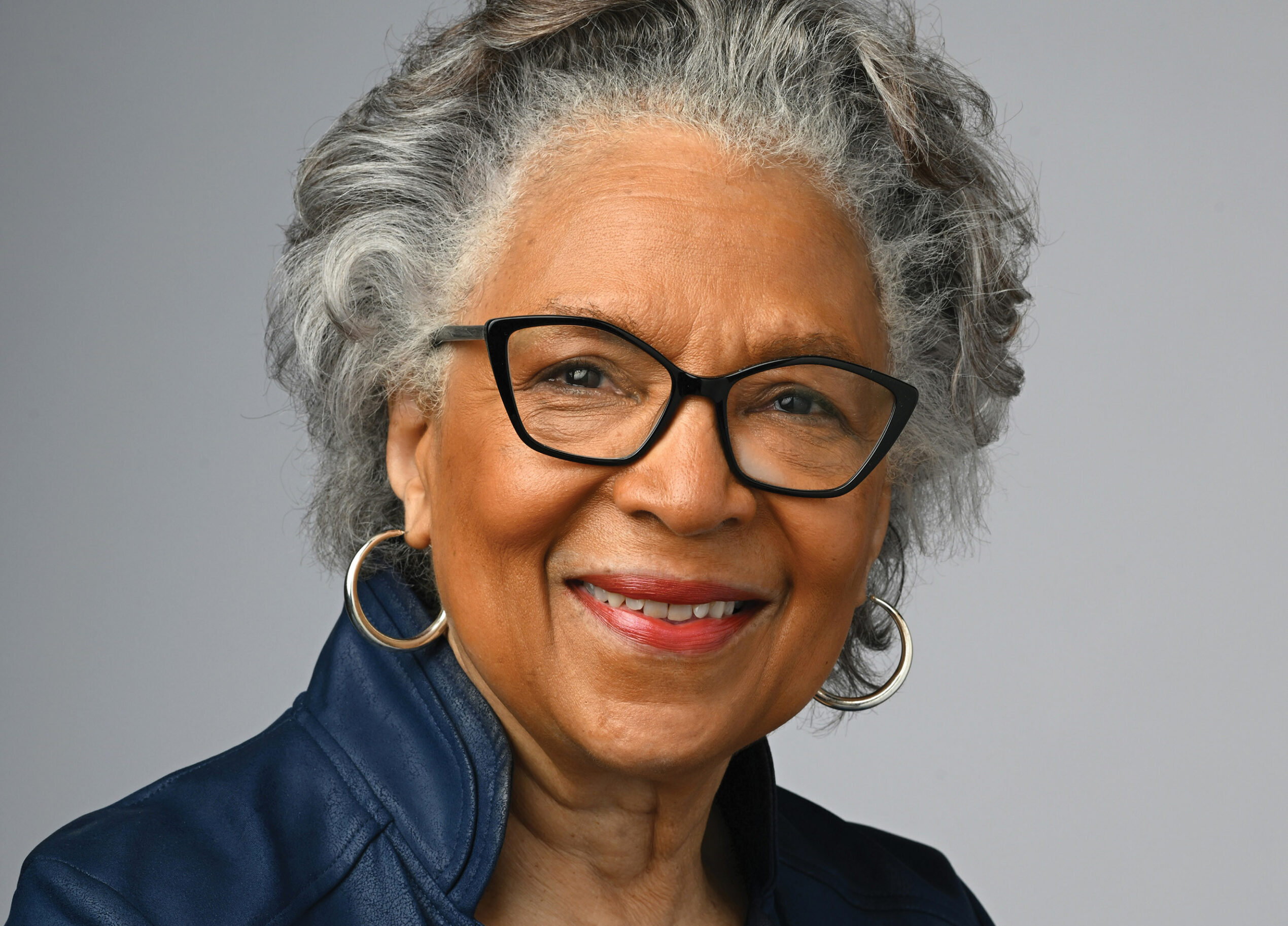
Spiralis Gallery in Easton showcases the works of Alma Roberts, whose visual storytelling prompts important dialogue
Written by Kristen Hamsphire
“Nothing changes the world without human conversation, and we need to learn how to dialogue effectively,” says Gail Patterson, a collector who opened Spiralis Gallery in Easton to create a space for just that—for idea sharing and broaching tough topics with a spirit of hope.
“Art is an excellent vehicle for doing that,” says Gail, who is drawn to story-driven art and fills her gallery with Afro-Caribbean pieces that offer a fresh, contemporary and inclusive voice for the Eastern Shore.
“Art isn’t like a couch—it’s not designed to match the curtains or to be just a thing on the wall,” Gail says. “It’s a piece of the artist’s soul.”
Baltimore-based abstract expressionist painter Alma Roberts will open her window to the world at Spiralis beginning Friday, July 11, with an opening reception and a meet-the-artist experience from 5-7 p.m. Her exhibition, titled “Harboring,” will run through Aug. 31 with an artist talk on July 26 at 2 p.m.
“Harboring” carries a rich double meaning, blending the physical act of providing shelter with a more abstract notion of concealing thoughts or intentions. This layered meaning deepens the emotional, societal and social well, suggesting protection and secrecy, safety and suspicion.
“It provides a window into Alma’s viewpoints on life and the issues that impact it,” Gail says of Alma’s evocative, story-driven art and how she conveys important messages in a culturally grounded manner.
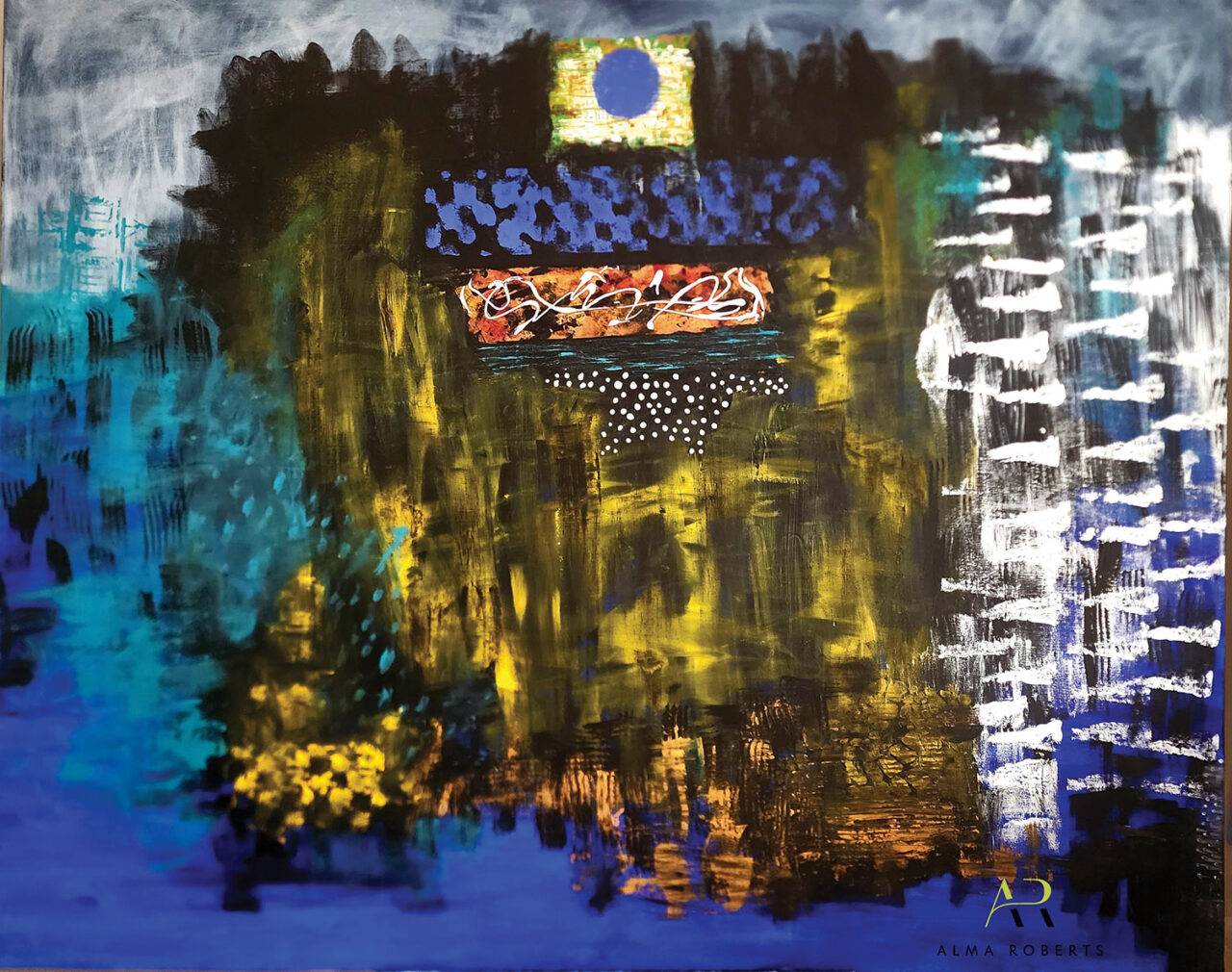
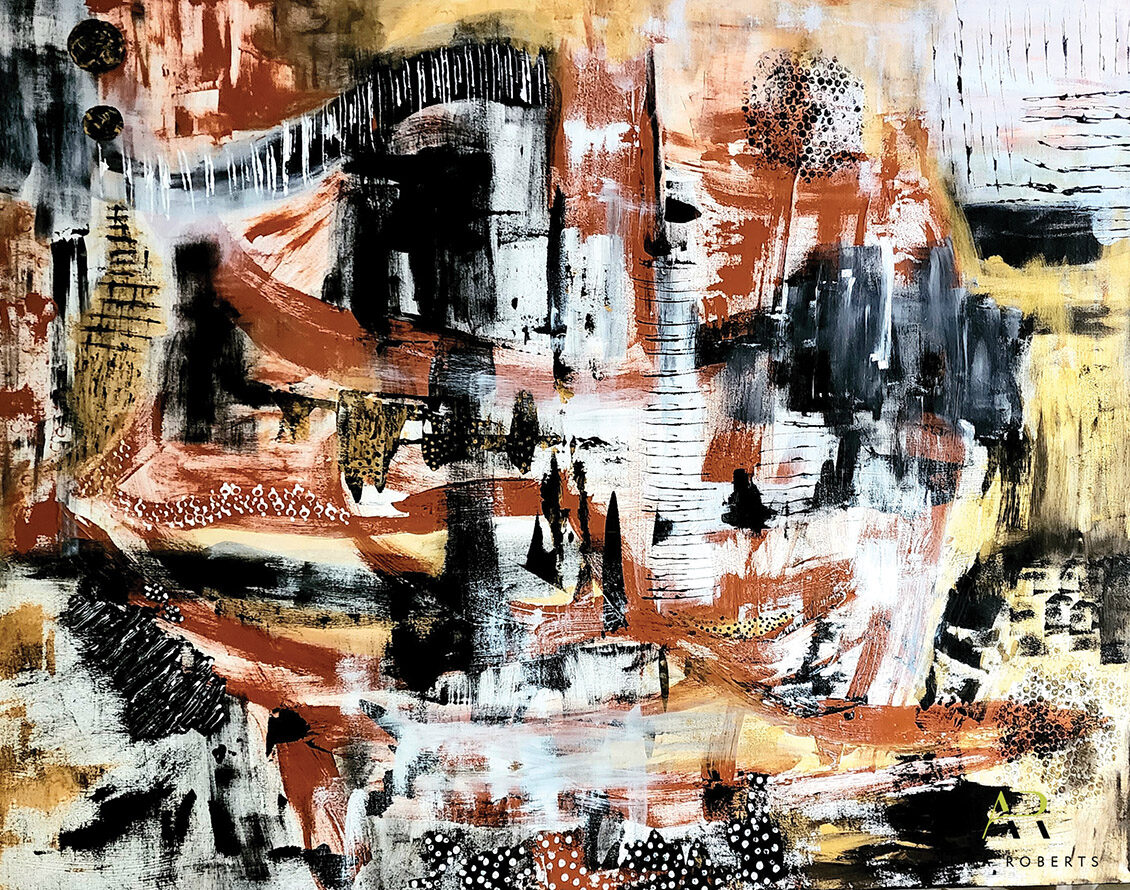
Real Stories of Hope
Alma grew up the youngest of nine children. Her father was a charcoal portrait artist, but she did not know this to be the case until much later in life. He worked for the U.S. Postal Service to provide for the family, so Alma was raised with a notion of her father’s artistic talent but no real exposure to it.
She found her own way in storytelling, writing poems and short stories and eventually founding a group called New Breezes to promote other Black and Brown writers, mostly from the mid-Atlantic region.
When she adopted her four-year-old son, she says, “I did what my father did, and I gave up writing to raise this wonderful child.”
Then a couple of decades later, “out of the blue,” she heard her father’s voice. He had passed away, but she felt his presence and encouragement to “pick up a paintbrush and paint with your left hand.” (They shared a southpaw preference.)
So, she did. And then she began painting with her right hand, and soon her art “exploded,” Alma relates.
She is self-taught and her visual storytelling is grounded in conveying hope in darkness.
“I paint my way through life,” Alma says. She is a proud Baltimore native who is integrated into the community—its history, its present and its future.
Alma is a co-founder of the Directors and Collectors Art Salon and a founding member of the Joshua Johnson Council at the Baltimore Museum of Art. Her solo exhibits have intrigued audiences at the Baltimore City Hall Galleries and the James E. Lewis Museum of Art at Morgan State University.
She says, “I am an activist and an optimist, and every time I step up to a blank canvas, I enter spaces that bring me into contact with different realms.”
She paints her emotions and her interpretations, and she paints subject matter that is “beautiful or sometimes unsightly and unfathomable.”
Alma gets real. It’s not always pretty, but the messages always carry hope.
“They’re stories I’m living or that I have lived, and messages I want to leave for my son and grandchildren,” she relates.
Gail says, “The way Alma conveys her messages using art as the vehicle is very consistent with what Spiralis is trying to do—the way she promotes hope in her art while still engaging in difficult conversations. If the world is going to change and have hope, we have to confront painful truths, and she does that effectively.”
“Art isn’t like a couch—it’s not designed to match the curtains or to be just a thing on the wall,” Gail says. “It’s a piece of the artist’s soul.”
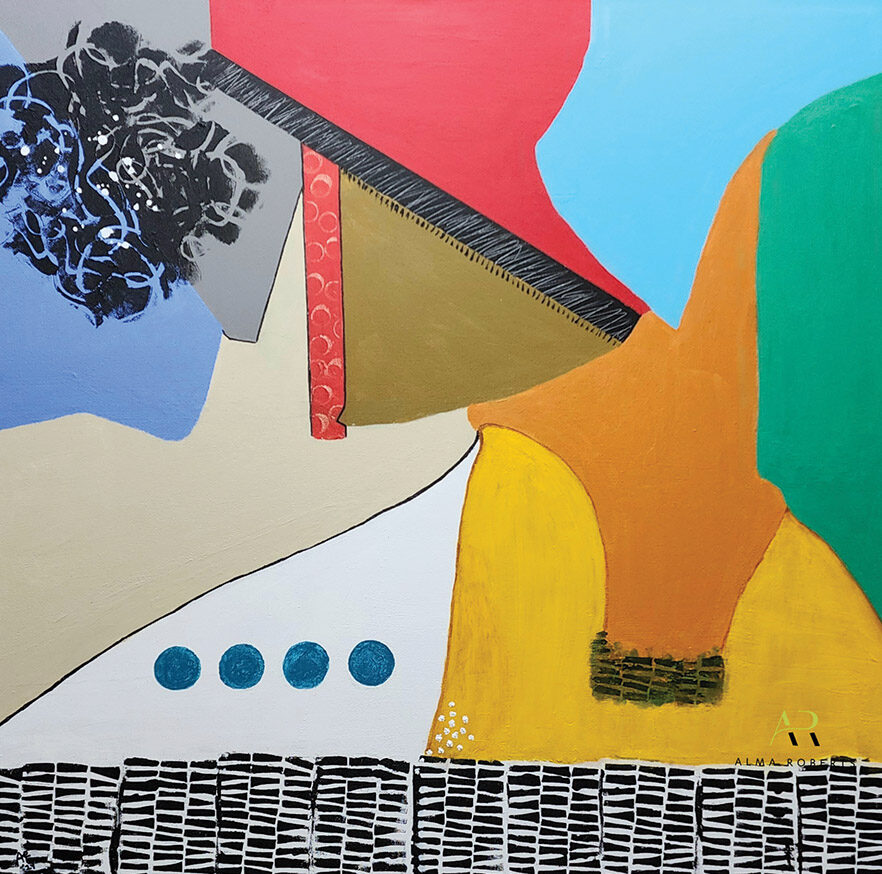
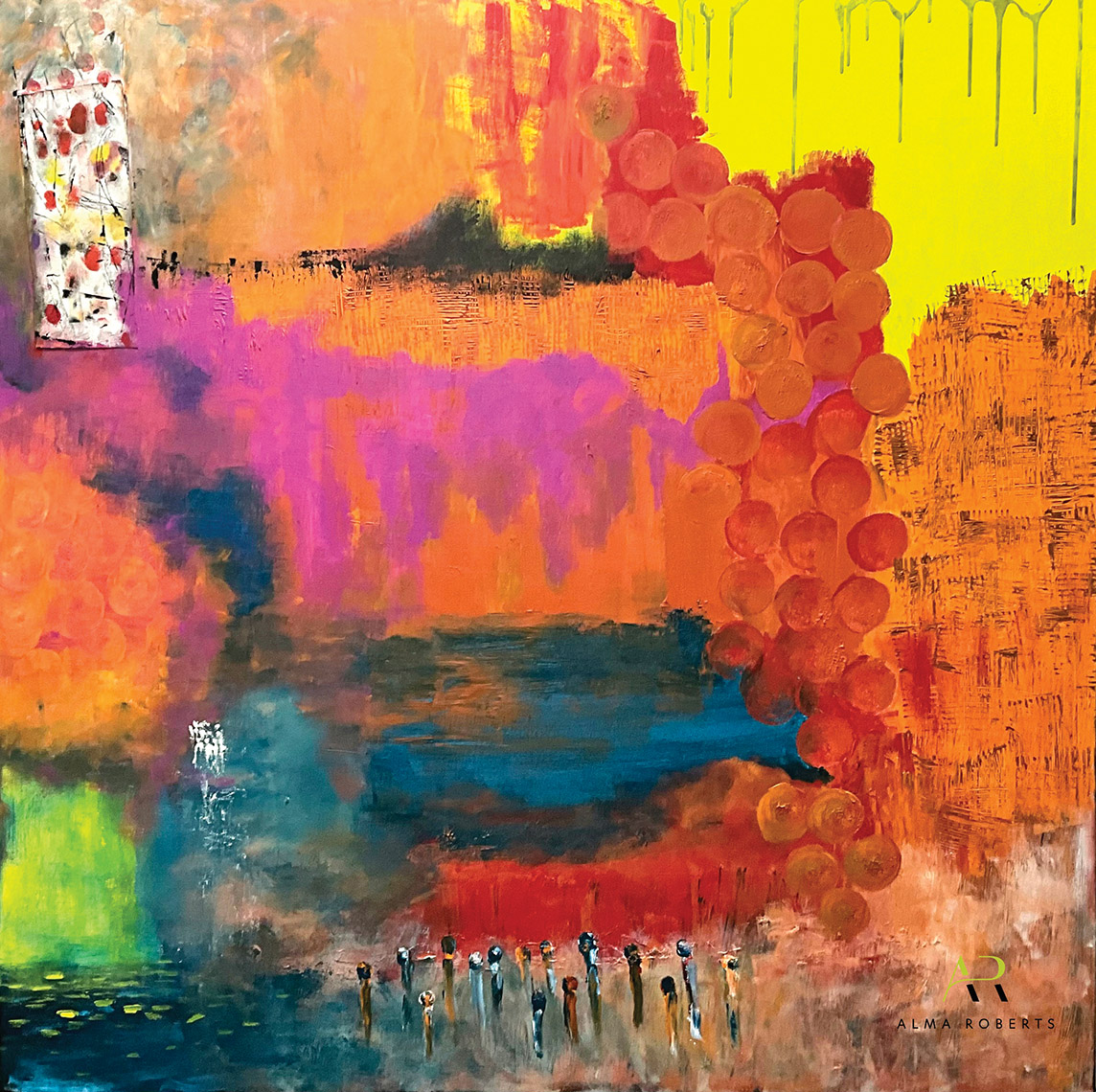
Full Circle
The exhibition’s title, “Harboring,” reflects a tension between tragedy and celebration. While it honors the Baltimore Harbor, it also acknowledges its history as a landing site for slave ships. “There is a duality,” Gail notes.
Alma says, “I have a love affair with the city, but what spurred the painting is when David Bramble, a Black man born and raised in Baltimore, purchased the Inner Harbor. I’ve known David’s mother and knew David from a distance growing up.”
She reflects on her ancestors. “The Harbor is where we came, where we landed in this part of Maryland,” Alma relates, calling Bramble’s role a full-circle moment. “We now own that and celebrate who we are.”
Her piece “Eulogy” tells the story of Alma’s African ancestors, “stolen from the Motherland, and those who died during the horrors of Middle Passage, and the families and communities that were left to grieve the kidnapping of their loved ones.”
It honors enslaved people who were killed through barbaric acts, including lynching. “This painting is a eulogy to praise their brilliance, resilience and courageous fortitude,” she writes in a statement.
Always, there’s hope.
And often a full circle, including back to Easton for the show at Spiralis. Alma reflects on working at a local hospital and discovering the Tidewater Inn, where she would steal away on weekends for respite. “I’d sit on the front porch, and it was my getaway place,” she says. Expressing her gratitude for showing her work at Spiralis, she says, “It’s fortuitous.” CS
Experience Alma Roberts’ “Harboring” at Spiralis Gallery
Opening Reception: Friday, July 11 with a meet-the-artist experience from 5-7 p.m.
Artist Talk: Saturday, July 26 at 2 p.m.
Exhibition Closes: Sunday, August 31
Email: Info@CoastalStyleMag.com
Phone: 410-205-MAGS
Terms of Use
